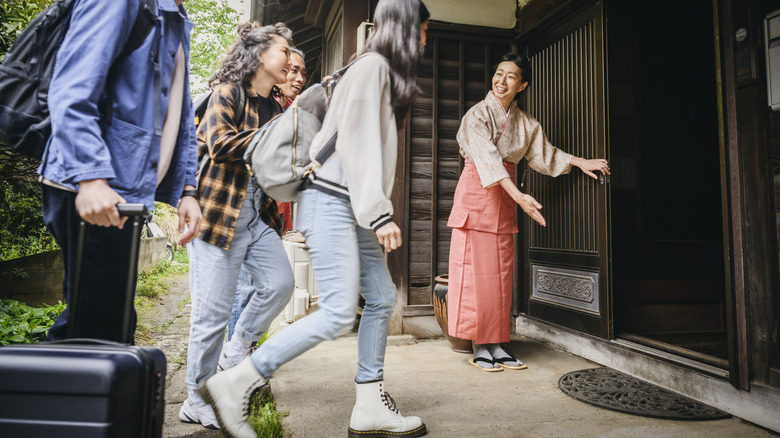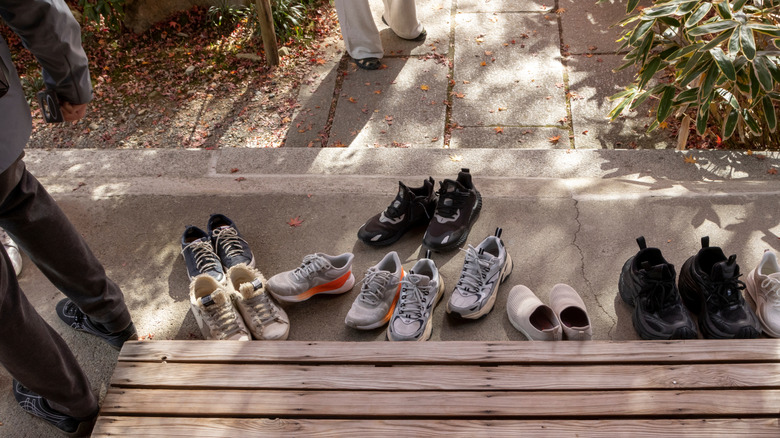The One Rule You Should Follow When Entering A Home In Japan
Bursting with charm and tradition, Japan has long captivated the hearts and minds of travelers — and it's easy to see why. From its bustling metropolises to serene temples and must-visit culinary havens, the country offers countless opportunities for visitors to explore and experience a whole new world of flavors, sights, and customs that have been carefully passed down through generations. That being said, understanding and respecting these practices isn't just about being polite — it's also about embracing their cultural significance.
Don't worry, though: Following local customs in Japan doesn't have to be daunting or complicated. In fact, one of the easiest things to do if you're hoping to be a considerate tourist when visiting Japan is the simple act of removing your footwear before walking into a home or building. Beyond mere courtesy, slipping off your shoes is actually a deeply ingrained practice that's centered around traditional values like cleanliness, respect for living spaces, and the clear distinction between the outside world and the sanctuary of the home.
And while the tradition stems from a more practical purpose (from when local homes featured delicate tatami mat flooring that required special care), that doesn't mean it's any less important today. Nowadays, even in modern buildings with Western-style flooring, removing your shoes is still considered a must, and anyone who doesn't follow this custom is likely to get a few "tsk-tsks" alongside a rightful flurry of judgmental looks.
When and where to remove your shoes
The transition from outdoor to indoor spaces in Japanese homes typically happens in an area called the genkan — a small, recessed entryway that's specifically designed for removing shoes. This space, which usually sits slightly lower than the main floor, serves as a clear boundary between the outside world and the clean interior of the home. In most cases, you'll often see shoe racks or storage areas here, along with indoor slippers for guests to use so they don't walk around totally barefoot.
That said, the practice isn't just limited to private homes. Many traditional establishments across Japan — including ryokan (Japanese inns), restaurants with tatami seating, and some cultural spaces — also require visitors to remove their shoes before coming inside. As such, you'll definitely want to be careful of the clothing you pack for Japan — especially when it comes to footwear. After all, wearing anything with too many laces or complicated straps might leave you scrambling for time (or balance) while everyone else in your group simply slides their sneakers and sandals right off.
Oh, and it probably goes without saying, but if you're traveling through Japan... make sure you've got a clean pair of socks on at all times! No one wants to see your pinky toe poking through a hole in the seam, or worse, catch a whiff of sweaty feet after a long day of sightseeing. Especially not Japanese locals who are well known for taking great pride in how they present themselves and care for their appearance.

